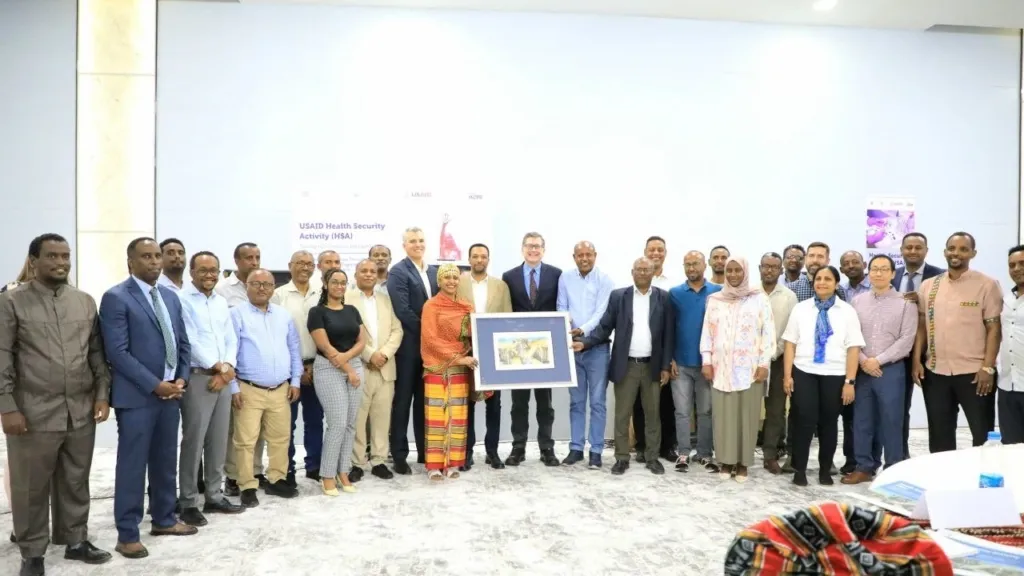Volunteer Voices: Have You Met COVID-19?
What is it like on the front lines of a devastating virus? Read the latest dispatch from a Project HOPE volunteer nurse deployed to Navajo Nation in Shiprock, New Mexico.

Navajo Nation has been hit hard by COVID-19, with the virus spreading rapidly among the tight-knit community. In partnership with Indian Health Services, Project HOPE is providing volunteer nursing support in Northern Navajo Medical Center in Shiprock, New Mexico, as they respond to an increase in COVID-19 cases.
Have you met COVID-19?
You don’t want to.
It’s shocking how all-encompassing this disease is. It’s overwhelming. I remember having a distinct realization yesterday afternoon that this disease has a presence unlike anything I’ve ever come in contact with.
Throughout my career, I’ve had the privilege to work in many departments, including solid organ transplant, bone marrow transplant, renal, cardiac, thoracic, oncology, ortho, and immunology. I’ve worked on the floor, the ICU, and the clinic. But nothing compares to this disease in its ability to affect everyone and everything it comes in contact with.
“Nothing compares to this disease in its ability to affect everyone and everything it comes in contact with”
Steve Bronson, Project HOPE Volunteer
Its effect is devastating. Think about the patient: You don’t feel well and become short of breath, even though you’re doing almost nothing. So you need to get on some oxygen in order to stabilize yourself. You enter a facility and are admitted to a room, usually with another stranger. They close the door, and you can’t leave that space until either you go home or transfer to a sicker unit. Getting out of bed to use the bathroom is a struggle. You can have no visitors.
Yesterday, here at Northern Navajo Medical Center, a family came to the first-floor windows and pressed themselves against the glass to see their grandparents, who were both hospitalized together. She’s recovering and is able to discharge, but he’s not improving and is starting to develop cardiac issues. There is no splitting them up, though. Navajos live in extended families, and, unfortunately, some of them have been devastated. One family had 28 out of 32 members contract this disease, with four deaths.
“Imagine spending all day listening to a stranger coughing next to you in the room, and you can’t do anything about it. There’s nowhere to go.”
Steven Bronson, Project HOPE Volunteer
For families of patients, you can’t take care of your sick loved ones the way you would normally do — the only way you can is if you are COVID-positive or you protect yourself with PPE. One of my patients yesterday couldn’t go home because not everyone there is positive and there are young children. So he’s stuck here in the hospital. Imagine spending all day listening to a stranger coughing next to you in the room, and you can’t do anything about it. There’s nowhere to go.
Medical staff can’t do much for these patients. Interventions are limited. We have to minimize our time spent in their rooms. All of the things that we normally do to care for vulnerable patients — all of the little things that are part of our role and responsibilities — have been taken away by the virus.
The humanity and connection are concentrated in just a few moments. You don’t just check in on your patient the way you normally would; you monitor their O2 waveform and watch the numbers on the screen. What was 92% is now 87%. Are they up to the toilet or is something else going on? I’ve been told by experienced COVID RN’s that decompensation happens quickly. “Over a couple hours?” I asked. “No,” I was told, “a couple minutes. When they turn, they turn quickly. Five, 10, maybe 30 minutes.”
And the PPE.
You wear scrubs from the hospital, then a cap for your hair. Then a second cap. Booties over your shoes. Gel. Place an N95 mask on and then a second surgical mask. Then enter the unit. When you are ready to enter a room, it’s gel, glove, gown, a second set of gloves, then your goggles or face shield. Hopefully you have everything you’re going to need for the patient. Then in you go.
“All of this PPE and gel, the coughing, the reminders, the barriers between everything — it’s taxing. You feel like you are covered in something that you can’t see, touch, or smell, but you know it’s there.”
Steve Bronson, Project HOPE Volunteer
When you exit, you remove your dirty gloves on the way out, then the gel. Remove your gown, gel, then remove your face shield and wipe that down, then more gel, then remove your gloves. Leave your cap on and your second mask, and remember never to touch your face or head. If you leave the COVID unit, you then remove the second cap, mask, and booties. And of course, gel.
COVID has a physical presence. All of this PPE and gel, the coughing, the reminders, the barriers between everything — it’s taxing. You feel like you are covered in something that you can’t see, touch, or smell, but you know it’s there. Crouching over your patient trying to start an IV or draw blood, they start coughing. You had them put a mask on, but all you can do is hope your PPE will protect you.
It’s devastating for all. And the unit here is relatively minor in the big scheme of things. I wonder what it’s like in the more serious units.
I’m lucky: I’m here to help as much as I can, but I get to go home after a brief period. Not everyone gets that privilege.
Steve Bronson is a Registered Nurse from Seattle, Washington, and a Project HOPE volunteer. He is deployed to Shiprock, New Mexico, where he is supporting the Indian Health Service at Northern Navajo Medical Center.



